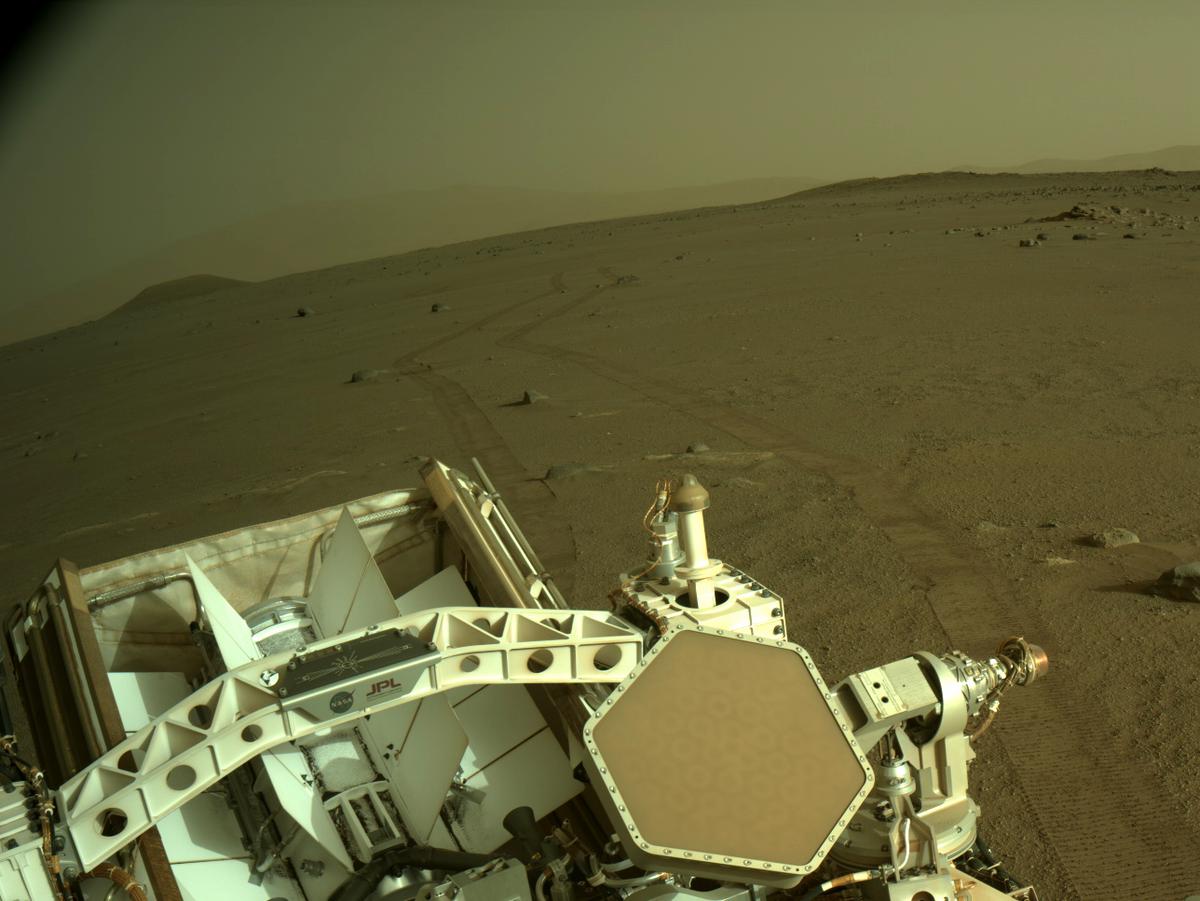

Where there's water, there's potential for life - and Perseverance will seek signs Mars was once inhabited by alien microbes. Only 10 minutes later, it had planted its six wheels firmly on the Martian soil in Jezero Crater, a location that scientists believe was once a lake bed. When fully loaded, the landing vehicle takes off, leaving the rover behind. When it reached Mars, it jettisoned its outer layer and slammed into the red planet's tenuous atmosphere. New horizons loom for space R&D Shultz (left) wants a civil station. It spent the last seven months traveling from Earth to Mars, shielded from the harsh environment of space within the Mars 2020 spacecraft. Perseverance launched on July 30, 2020, beneath the early morning sun of the Florida coast aboard a United Launch Alliance Atlas V. The team promised thousands of raw images would be made available today at the Perseverance mission site. We've already seen the fruits of its early labors in stunning images from its descent and landing, and the press briefing showed many more images. Perseverance is now ready to survey its new home in Jezero Crater, an ancient lake bed, for signs of past life. "What we think happened is that there was a communication error between the device that is responsible for digitizing the analog signals that the microphone picks up and and then passing the app to the computer that actually stores all the data," Gruel said. The team also revealed audio from a microphone installed on Perseverance, though audio could not be recovered during the landing phase. "Percy" gets a great look at the descent stage just before it departs, a final goodbye to the craft before its demise. Once the rover is safely on the ground, the descent stage autonomously flies away from the rover's landing zone and nosedives into the Martian soil. The descent stage lowers Perseverance to the ground via a "skycrane" - like a reverse claw machine, dropping a toy, rather than trying to pick it up. We have already seen stunning images from the descent and landing phase, but watching it unfold in real time is mind-blowing. Bye!īut the highlight of the new footage is vision from both the rover looking up at its descent stage and the opposite, from the descent stage looking down. The heat shield jettisoned by Perseverance minutes before landing. The black disc flies from Perseverance to its final resting place on the surface of Mars. The heat shield being jettisoned from the bottom of the spacecraft is a serene sayonara to Perseverance's protective gear. There are a lot of wonderful moments in the footage.

But even the most keen Mars watchers will be blown away by what NASA has delivered from just above the surface of an alien planet. We've become somewhat familiar with the dusty red surface of our cosmic neighbor, mostly thanks to rover missions led by NASA over the last two decades. "We collected a little over 30GB of information and and over 23,000 images of the vehicle descending down to the surface of Mars," said Dave Gruel, EDL and camera suite lead on Perseverance. An extreme amount of data has been beamed back to Earth to bring us images of another world. The latter is the kind that is generally found at lower altitudes.The footage begins about seven miles above the surface and ends with a farewell to Perseverance's descent stage. Calculations showed that the clouds were passing nearly 80 kilometres above the surface and are extremely cold, suggesting they are composed of carbon dioxide ice instead of water ice clouds.

According to the mission team, the images were taken on December 12, 2021, the 3,325th Martian day, or sol, of the mission and they show shadows of the clouds drifting across the terrain.Īlthough the rover's cameras are not designed to take photographs of the sky, it was able to capture the clouds allowing scientists to calculate how fast and how high the clouds were moving. In the latest blog post, the JPL team revealed that the images were captured using a navigation camera aboard the rover and were then converted into 8-frame GIFs. These digitally-enhanced images from one of my navigation cameras were put together into 8-frame GIFs. These wisps were ~50 miles (80 km) above me & the height suggests they’re made of carbon dioxide ice. ☁️ Just clouds drifting through the Martian sky.


 0 kommentar(er)
0 kommentar(er)
